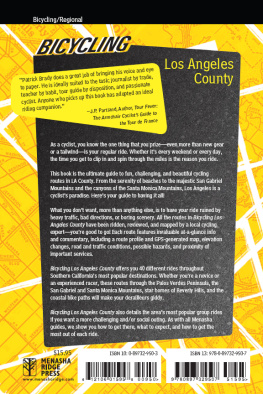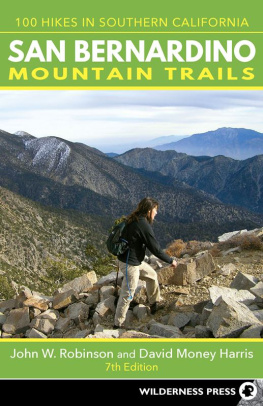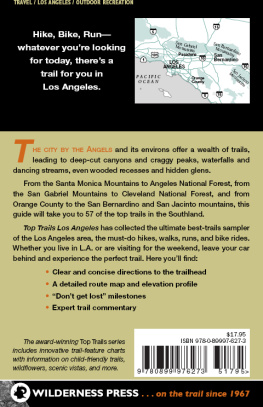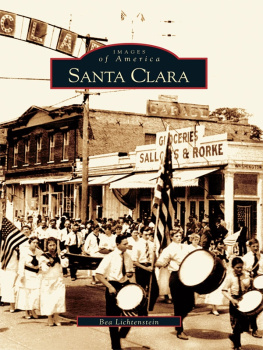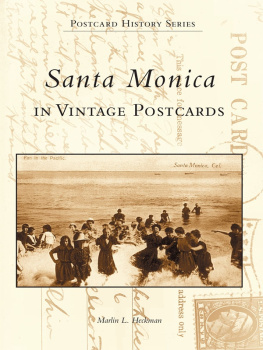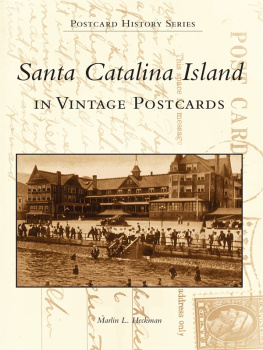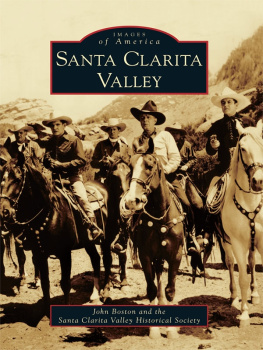

Published by Natural History Press
A Division of The History Press
Charleston, SC 29403
www.historypress.net
Copyright 2013 by Patrick Mitchell
All rights reserved
Front cover: San Mateo Canyon wilderness. Photograph by the author.
First published 2013
e-book edition 2013
Manufactured in the United States
ISBN 978.1.61423.898.0
Library of Congress CIP data applied for.
print edition ISBN 978.1.60949.617.3
Notice: The information in this book is true and complete to the best of our knowledge. It is offered without guarantee on the part of the author or The History Press. The author and The History Press disclaim all liability in connection with the use of this book.
All rights reserved. No part of this book may be reproduced or transmitted in any form whatsoever without prior written permission from the publisher except in the case of brief quotations embodied in critical articles and reviews.
I dedicate this book to my wonderful wife, Shannon, for pushing me to do what I love and standing by me when I fail. Her compassion, beauty and wisdom are as big as the mountains and as deep as the canyons. Without her support I could not have finished this book.
Contents
Preface
I grew up in the distant shadows of the Santa Ana Mountains in the hub of Orange County. I have been hiking in the range for nearly three decades. It was more than twenty-five years ago that this little mountain range began to earn my respect.
During an ecology field course in which we camped near the crest of the range, something was said that I found hard to believe but that also inspired me to explore the Santa Ana Mountains more fully. The instructor of the course was Richard Bates, and one evening after a campfire dinner, as we looked over the ridges and valleys of the western slope, he said, You are looking at one of the wildest landscapes in Southern California. In fact, he explained, the Santa Ana Mountains may be wilder than the Sierra Nevada. Mr. Bates, as we all came to know him, is a man full of knowledge and wisdom about wild and natural places. This statement proved no different.
It was hard to believe, but since that night on the ridge above Potrero Los Pinos and San Juan Capistrano, I have hiked nearly every trail and road that crosses the rugged slopes. I have read as many articles, books and scientific studies on the range and its inhabitants as I could find. I have even conducted my own research to benefit management of the San Mateo Canyon Wilderness Area. Several years before writing this rendition of a Santa Ana Mountains book, I even joined several others on an expedition of the range in which we filmed the month-long experience.
Before that, I worked for years as an activist trying to slow the development machine that was swallowing up the wild places where I learned to explore but found that being on the losing side so often made it difficult to continue. I abandoned front-line activism to become an educator who shared the beauty of nature with people of all ages and backgrounds. In-your-face activism is for the young of heart and mind, and unfortunately, watching one-of-a-kind sacred solstice caves be blown from a hillside and seeing centuries-old oak trees crumble under the blade of a big yellow bulldozer made my heart old and filled my mind with too many sad memories. Today, I follow other great Western thinkers like Abbey and Foreman and let the young take conservation philosophies and run with them. My activism today consists of a one-on-one conversation, a letter to the editor or one to my local politician.

There are many great views in the Santa Ana Mountains, like this one near Ladd Canyon.
Sharing the good things in nature with people who were seeing them for the first time covers up the wounds and scars of activismlike a miracle cream available only in Gods great mountains. Some of my favorite programs have taken place in the Santa Ana Mountains as I led inner-city teenagers on backpacking trips into the depths of San Mateo Canyon. One such trip with the Orange County Conservation Corps was a life-changing experiencefor both the participants and for me.
I was at the head of a group of ten tough young men and women whose daily lives were harder and more complex than I wanted to ever experience. They talked tough, acted rough and were strong, with views on life that were very different from mine but still shaped from very real experiences. When the sun went down and bats and owls came out and coyotes howled, they became scared, lost and totally aware they were out of their element. And I was in mine. Several years after this trip, one of the young men contacted me. He wanted to know if I could write him a reference letter because he was applying for a job with California Fish and Game. He explained that the week in the wilderness changed his life. He said, Now I know why you get so excited when you talk about nature. Little miracles like that make the wounds of battle heal quickly.
Through these experiences, I have found that although the peaks are not as high and the range is not as vast, the Santa Ana Mountains in many ways are at least as wild as the Sierra Nevada. But that is not all I have found. As development continues to chew up the foothills to the east and west of the range and new roads cut off corridors to the north and south, the ability of the mountains to maintain their wild heritage is diminished.
Many of the plants and animals in the range continue to be threatened by the loss of habitat. Large fires, new cities with roads and houses and other infrastructure replace the habitats and natural processes on which plants and animals have come to depend.
Another concern is that as the cities surrounding the Santa Anas continue to grow, more of the citizens who dwell there seek refuge from the urban environment by recreating in the wild canyons of this spectacular range. It is for these reasons that I wrote this book.
I hope that the information compiled herein will help keep the range wild, as well as help visitors to the Santa Anas feel like they have learned a little from the mountains. Although there are people out there who may know the range better than I do, and know better the parts and places, this book is probably the most complete and well-rounded body of information on the Santa Ana Mountains currently available. At least that has been the goal. So read on, and learn from these mountains as I have. Let them remain forever wild.
Acknowledgements
This book would not have been possible without the love and support of my family. I love them back and thank them for sharing in the sacrifices of living with a naturalist and writer instead of a wealthy tycoon. I would like to thank Santa Ana College for providing field courses that introduce students to the natural lands of Southern California and for providing Richard Bates with a place to share his vast knowledge and experience. The writing of this book began as a senior project at Prescott College, where I learned that education is a journey, not a destination, and that science and spirituality are a powerful combination when rooted in the mind, heart and hands of a conservation naturalist.
This book has been a journey for sure. Thanks to Tom Fleischner and Walt Anderson for their inspiration and support at the onset of this project. I want to thank Jerry Roberts and The History Press, who found me at a time when I thought this book would never make it to press. I also want to thank Joel Robinson for his photos, encouragement and contributions to the Santa Ana Mountains. I would like to thank all the other naturalists, activists, settlers, rancheros and indigenous people who visited or lived in the Santa Ana Mountains before me. Their lives made this book possible.
Next page



